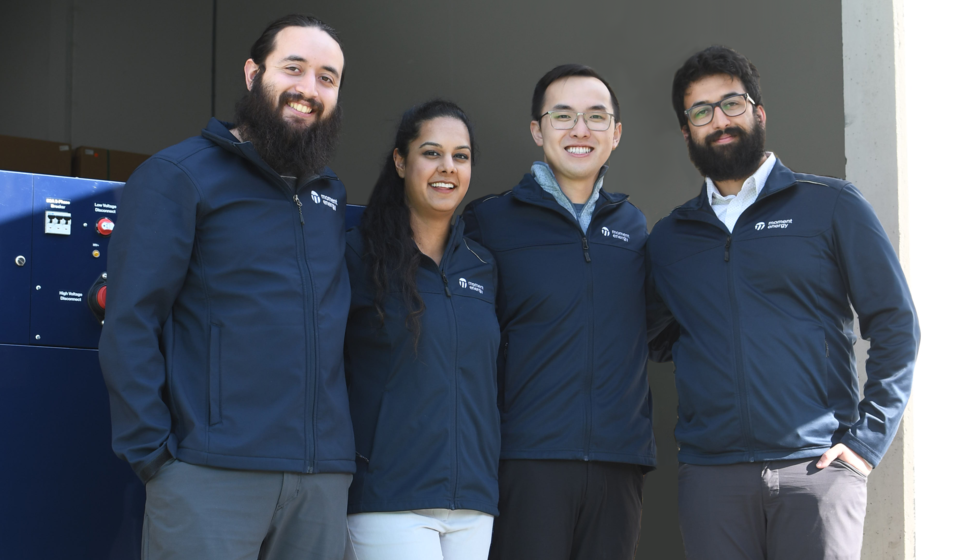Just four years ago, Moment Energy was a four-person startup working on a process for repurposing used electric vehicles batteries.
“We started in 2020 as four co-founders working out of a garage,” said Moment Energy co-founder and COO Sumreen Rattan.
“That was our first year of operations. Now we’re a team of 40 people working out of our manufacturing space in Coquitlam.”
The company has been winning accolades and big contracts of late. Moment Energy was one of 13 91原创 companies to make this year’s global Cleantech 100 list.
And just last week, it was announced the company had landed an $800,000 contract to build an energy storage system for 91原创 International Airport, to be used as part of the airport’s electric vehicle fleet charging system.
The company was founded when four graduates of the Mechatronic Systems Engineering program at Simon Fraser University decided to start a business together that gave used EV batteries a “second life.”
The company is addressing two pain points with electric vehicles: What to do with spent batteries, and how to prevent grids from being overloaded by too many vehicles charging at the same time.
An EV battery has an average lifespan of about 10 years before it starts losing its capacity to hold a charge. At this point, recycling EV batteries is just too expensive.
Moment Energy buys used batteries from automakers such as Mercedez Benz and Nissan North America, and stacks them into larger rechargeable energy storage systems. Moment Energy’s battery energy storage systems (BESS) can be used by industries or power utilities for load balancing and peak shaving — the process of smoothing out electricity flows by using battery storage to deal with demand peaks.
“We’ve gotten a lot of traction in the off-grid space with having these systems deployed to reduce diesel generator consumption,” Rattan said.
The BESS systems can also be used to backup EV charging systems. As Rattan explains, too many electric vehicles using fast-chargers at the same time can strain the local electrical system.
“There ends up being too much stress being placed on the grid, where it’s just not able to support multiple EVs being charged at the same time, or EVs being fast-charged,” Rattan said. “In order to alleviate that, you can actually install energy storage to support the grid, so when there’s not a lot of stress on the grid, you can charge the system. And then when the grid is in need of extra support, you actually withdraw that electricity during those times.”
YVR has chosen Moment Energy to supply a BESS system, at a cost of $800,000, to be used in its electric vehicle fleet charging system. The B.C. government’s Integrated Marketplace program is providing $386,500 of the funding.
“The flexible EV-charging capacity from Moment Energy not only allows us to test different ways to charge our fleet, it also represents tangible progress toward our net-zero goals,” said 91原创 International Airport CEO Tamara Vrooman.
While an EV battery with 80 per cent capacity may no longer be suitable for powering a car, that’s more than enough capacity for large-scale battery storage that can last for several years when multiple EV batteries are stacked together.
“Reuse can provide the most value in markets where there is demand for batteries for stationary energy-storage applications that require less-frequent battery cycling,” says a 2019 McKinsey report.
Rattan sees Moment Energy’s battery repurposing as a kind of bridge to recycling.
“When we repurpose, we’re actually allowing recyclers to develop more time to develop their technologies so that, five, ten years from now, when they get the batteries from second life, it will be a more profitable and sustainable process,” he said. “We have over 35 megawatt hours of projects in the pipeline for second life, so there’s a huge demand for our energy storage solutions.”





